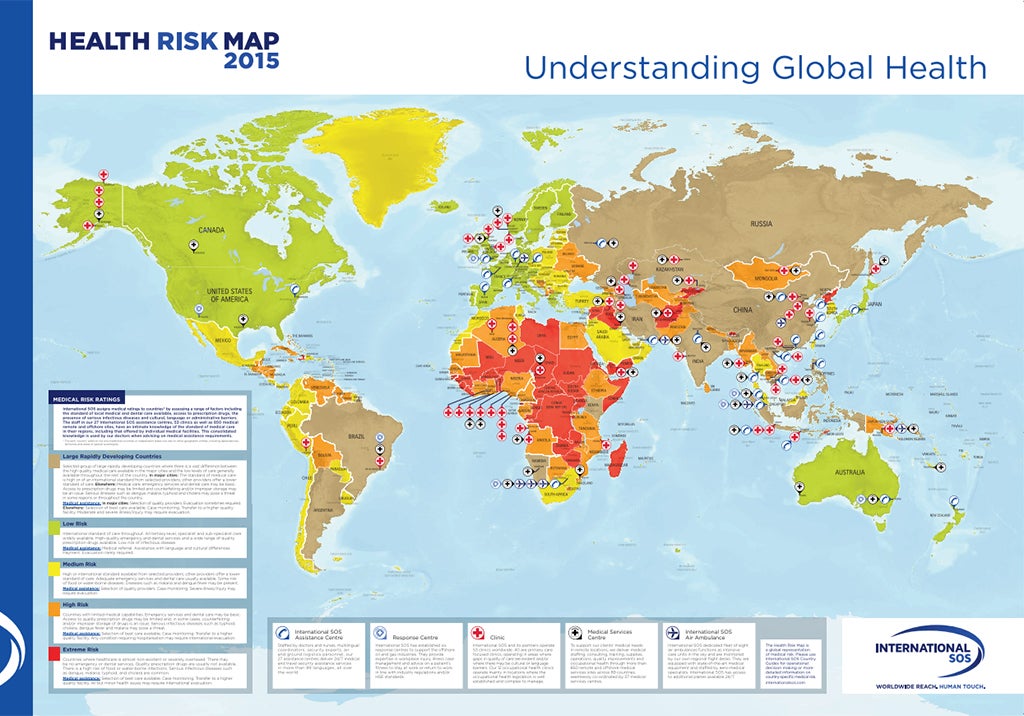Map identifies the best and worst places for emergency healthcare in the world
The Health Risk Map helps ensure travellers are aware of the risks they could be exposed to in different countries

Your support helps us to tell the story
As your White House correspondent, I ask the tough questions and seek the answers that matter.
Your support enables me to be in the room, pressing for transparency and accountability. Without your contributions, we wouldn't have the resources to challenge those in power.
Your donation makes it possible for us to keep doing this important work, keeping you informed every step of the way to the November election

Andrew Feinberg
White House Correspondent
Planning your summer holiday? You might want to take a look at the latest stats released by health organisation International SOS, which show which countries have the worst emergency healthcare.
According to the company’s annual International Health Risk Map - which ranks destinations as low risk, medium risk, high risk, and extreme risk - popular holiday destinations such as Mexico, Turkey, Morocco and Thailand have all been labelled medium risk, with their emergency medical facilities described as “average”.
The UK, the US, Greece, Iceland, Japan, and Australia are some of the best countries in which to receive medical treatment, while countries like North Korea, Iraq, Afghanistan, and Syria were deemed to have the worst healthcare.
Countries are considered high risk if they have limited medical facilities combined with higher risks of serious infectious diseases such as cholera, typhoid or dengue fever. Tourists have been warned that if they fall ill in high-risk countries, such as Tanzania, Egypt, Laos, and Cambodia, they may need to be evacuated to a different country to receive higher quality healthcare.
Emergency healthcare has, however, improved in parts of Africa. Countries such as Ethiopia, Kenya, Malawi, and Rwanda have been moved into a lower risk category, a marked improvement on previous years. It’s thought the progress comes as a result of foreign investment in private and state healthcare facilities.
Subscribe to Independent Premium to bookmark this article
Want to bookmark your favourite articles and stories to read or reference later? Start your Independent Premium subscription today.
Join our commenting forum
Join thought-provoking conversations, follow other Independent readers and see their replies
Comments